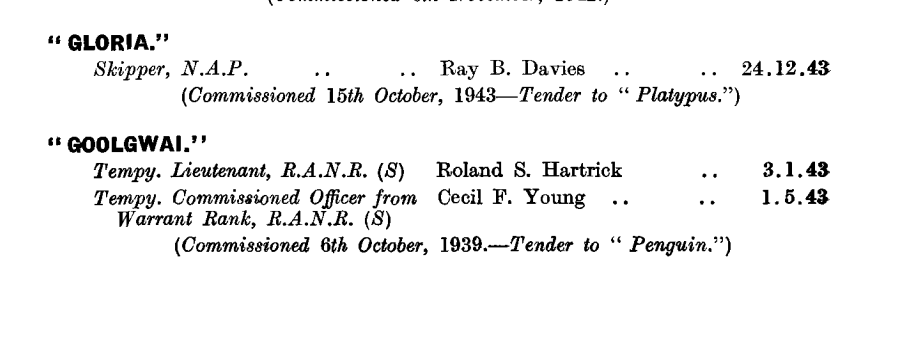HMAS Gloria
| Type |
Auxiliary Ketch |
|---|---|
| Commissioned |
15 October 1943 |
| Decommissioned |
27 November 1945 |
| Dimensions & Displacement | |
| Length | 48 feet 5 inches |
| Beam | 13 feet 6 inches |
| Draught | 5 feet 4 inches |
| Performance | |
| Speed | 9 knots |
| Armament | |
| Guns | 1 x .303 Inch Machine Gun |

With much of the Royal Australian Navy fleet deployed to foreign waters in the early years of World War II, the defence of Australia’s coastlines became a primary concern for the Naval Board. The Naval Auxiliary Patrol (NAP) was a war-raised unit approved on 25 June 1941, charged with patrolling and safeguarding Australia's inner harbours, ports, rivers and estuaries against enemy sabotage or attack. The NAP fleet was comprised primarily of former pleasure craft, offered freely by their owners.
In May 1942, the NAP was transferred to the Royal Australian Naval Volunteer Reserve (RANVR) and was thereafter known as the RANVR NAP. By October 1942 the total strength of the NAP had increased to over 3000 mobilised and unmobilised reserves. This was to remain the case until early 1944 when it was considered that the danger of enemy attack was remote enough to reduce the strength of the NAP to a minimum. https://seapower.navy.gov.au/media-room/publications/naval-auxiliary-patrol.
HMAS Gloria was a 48 foot Auxiliary Ketch that served as a Naval Auxiliary Patrol Vessel, a Rendering Mines Safe Support Ship, and Diving Boat. The boat was requisitioned for naval service on 18 February 1942, before being commissioned into the RAN on 15 October 1943, under the command of Naval Auxiliary Patrol Skipper Ray B Davies. The boat was decommissioned on 27 November 1945, and sold in January 1946.



